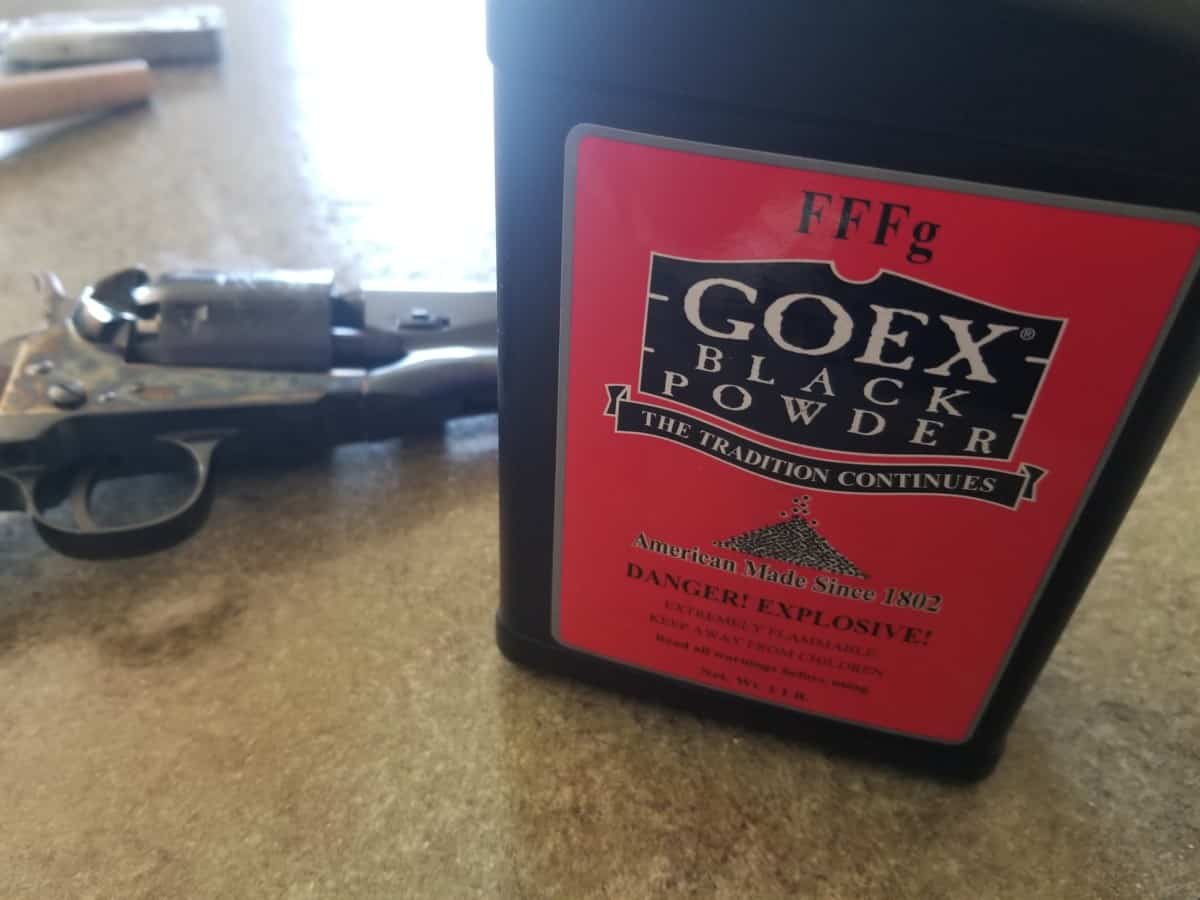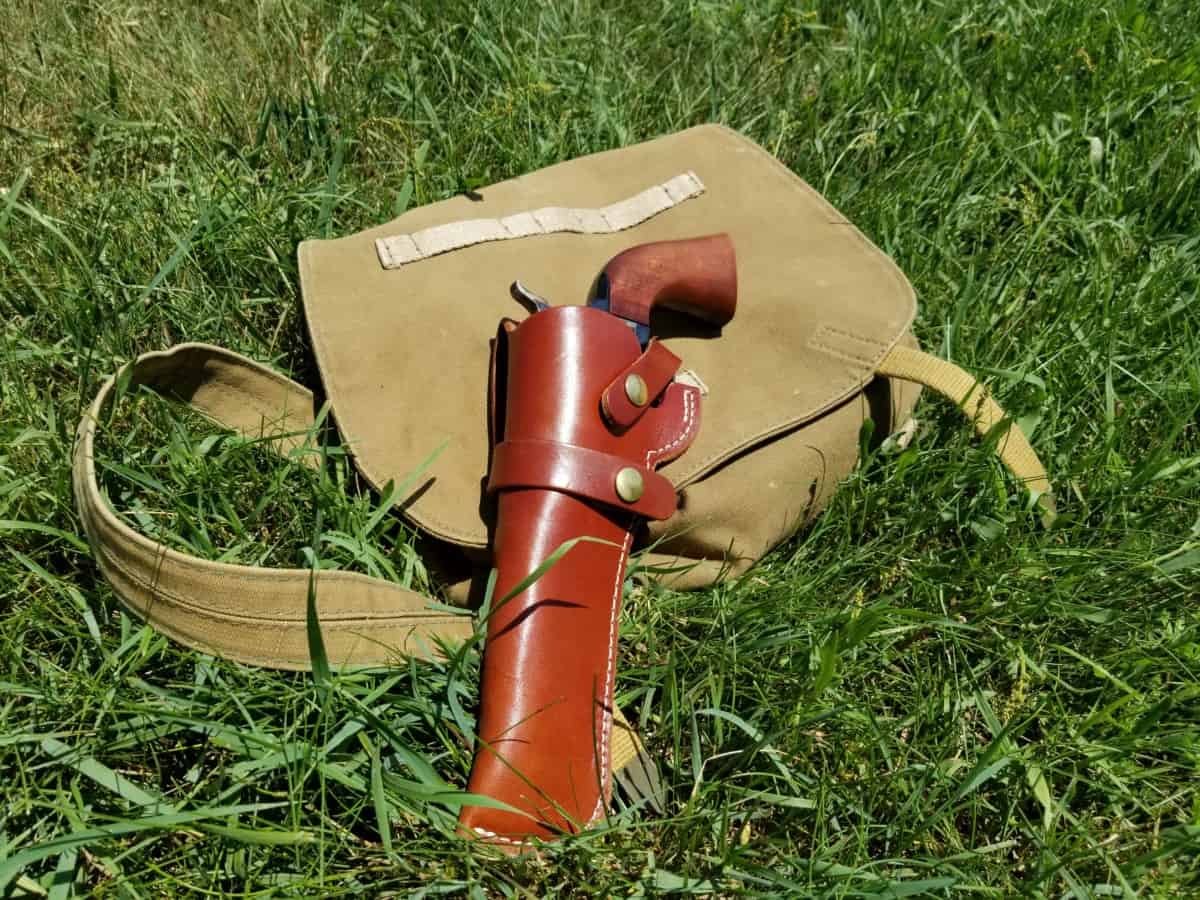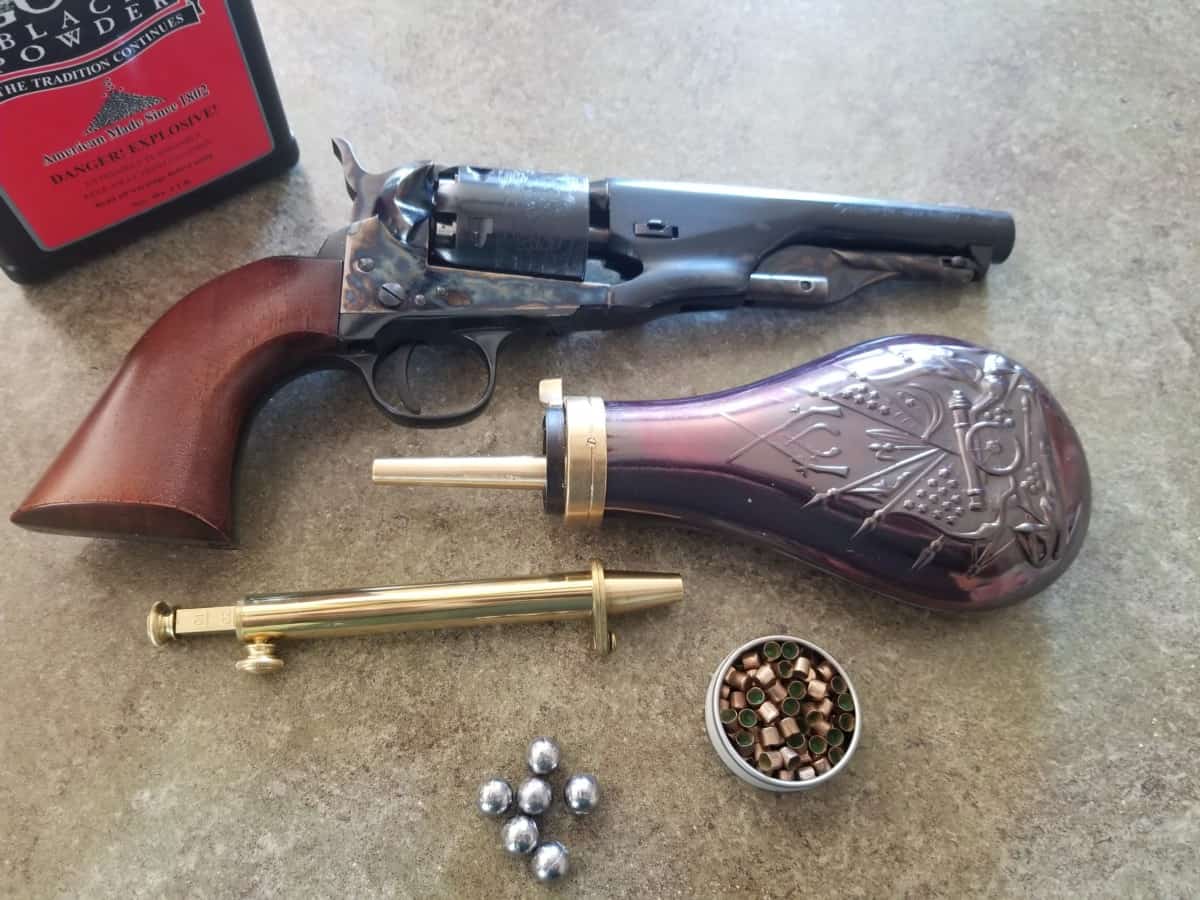One of the first questions anyone has when they get into cap and ball revolvers is in regards to how long they can stay loaded and still function.
It’s a good question, and one that involves a lot of variables. I’ll do my best to tackle them below.
A black powder firearm can stay loaded nearly indefinitely if it is loaded properly and not exposed to excessive moisture or water contact. Beeswax and tallow are used to help with waterproofing to ensure the viability of long-term loads.
That’s the quick and easy answer. Let’s dive into how long a cap and ball revolver can stay loaded when done properly, what a “properly loaded” cap and ball revolver is for long term storage, and what exactly causes them to fail to fire.
How Long Can You Keep a Black Powder Revolver Loaded?

In ideal conditions and when loaded properly, a cap and ball revolver can be reliably kept nearly indefinitely, for all practical purposes. By this, I mean years, if not a decade or more.
If you properly load the revolver in a manner that is conducive for long-term storage and keep it in a safe in a climate controlled room — then you can easily get years out of that load.
Long-Term Loading Indoors
To do so, I personally would remove all of the nipples from the cylinder first and rub the side walls (where the cap is in contact with) all along a dry piece of bees wax. Make sure to pick out the vent if any wax falls in the nipple.
This thin layer of bees wax will serve as a great seal for your nipples (assuming that the caps are a proper fit already). I prefer SliXshot nipples and Remington #10 caps since they are as close to a perfect seal as you can get all by themselves.
Then, put the nipples back in the cylinder and load with powder, a dry patch (optional), properly-sized round ball so that you see the ring after loading it, and then top with a grease of 2 parts olive oil (or lamb’s tallow) and 1 part melted bees wax.
That’s the ideal.
I’ve personally seen black powder revolvers and muzzleloaders that have been left loaded in a gun safe for years and fired successfully on the first attempt. The revolver fired all 5 rounds (1 chamber left empty so the hammer rested on an empty chamber for safety – “cowboy style”).
Long-term Loading in the Field
Now what if you’re carrying the cap and ball revolver regularly in the field?
I conducted an experiment to test how sensitive black powder revolvers are to temperature changes in the field. The results actually surprised me and you can read about that here.
That may depend upon extreme swings in temperatures. If you’re carrying the revolver in the field during the summer, and bring it inside at the end of the day, the temperature is relatively stable for the metal on the revolver.

If, however, you carry it in the winter on the outside of your clothing in freezing temperatures and then bring it inside, the metal will be in the perfect state for condensation — not only on the outside, but on the inside of the chambers as well.
Granted, my anecdotes involve muzzleloading long guns, but growing up in a large hunting family and community, I saw my share of misfires from guys who brought their rifles inside from freezing temperatures. The gun wouldn’t fire even after clearing the nipple vent and using a new cap. The powder had become corrupted due to the moisture from the condensation. Metal at 0-10 degrees Fahrenheit that is brought into a heated room at 75 degrees Fahrenheit will bead up with water like a cold beer on a hot summer day.
They likely had the rifle with the muzzle up, and the condensation ran down the barrel until it sat upon the lead projectile inside. On the sides of the projectile was a cloth patch that absorbed the water and drew it down below the round ball and onto the powder below.
The guys who left their rifles in an unheated garage, shed, or somewhere safe outside were the ones who always had a rifle that fired.
I don’t recall how many times the misfiring rifles were repeatedly brought inside from the sub-freezing temperatures, so I can’t say for certain how many times of cold-to-hot will ruin your powder charge. I just know that it can at some point. All the more reason to make sure your round ball is firmly pressed against the powder (and/or wad) to minimize the air space and to also prevent misfire from loose powder.
There’s also a case to be made for making a lubed patch that is impregnated with something that will repel water.
From my experience, black powder revolvers aren’t as fickle as a rifle might be, likely due to that patch and the lack of a perfect air and watertight seal. A revolver cuts a lead ring to make the round ball perfectly sealed in the chamber. If you wax the nipples prior to capping, you have now sealed it up on the other end. The compressed powder (if you loaded it correctly) ensures the bare minimum of air within the powder charge to introduce condensation.
If I were carrying regularly throughout the summer, I would (personal opinion) change my loads by first firing the current ones or simply unloading them after about a month (if reliability was critical). Click on the following link if you need my quick tutorial on how to safely unload a cap and ball revolver.
If you weren’t in fear of death or great bodily harm if the revolver had a misfire, I would’t bother changing out the loads in the summer.
If I were carrying it in the winter and it was exposed to extreme cold and then room temperatures, I would (personal opinion) change out the loads every week to keep reliability high (if it was critical to not have a misfire). If you have an unheated garage or shed, you could also keep the revolver there so that the temperature stays low to prevent condensation.
If you’re just shooting at rabbits, then I really wouldn’t sweat it if you changed out the loads every 2-4 weeks. If you keep the revolver in an unheated garage, just rock on throughout the season without changing the loads.
Now, if I were carrying it concealed for personal protection (not my first choice, but you do you) and the revolver was close to my skin, I would (personal opinion) remove the nipples before loading and rub beeswax on the side walls. That should prevent moisture from your skin getting by the caps and is the technique I use for waterproofing (as best as I’ve found) my revolver. I wouldn’t
For peace of mind, though, I wouldn’t chance it if I were placing my life on 19th century technology.
Will a Loaded Black Powder Revolver Corrode?
With respect to the black powder being inside the chambers and against the metal for a long period of time, you have nothing to worry about.
Black powder is corrosive to your firearm after it has combusted. Before it has ignited, it will not corrode the metal in your firearm’s chamber.
What Makes a Loaded Black Powder Revolver Not Fire?
Remember, we’re dealing with 1800’s technology here. If you do everything right and use the best materials available, you will still only have about a 95% success rate. That’s the joy and fun of black powder, and that’s the reason we now use semiautomatic weapons with modern powder and ammunition for self-protection.
With that being said, we’ve got a lot of things that can go wrong.
- Lubricated wad can leach moisture into the powder (if you use the right lube, I don’t see a problem if you intend on shooting within the month)
- Runny grease in high temps over the round ball can leach passed the round ball (especially if it wasn’t fitted properly)
- The cap could get moisture in it
- The cap could not be seated correctly (if not firmly pressed against the nipple the first hammer strike will “seat it” and the second hammer strike will fire it)
- The powder might not be compacted enough from a poorly loaded round ball
- A spent cap from a previous shooting session could have dropped into the action and won’t allow the hammer to contact the cap with enough force
- The nipple vent could be blocked from carbon fouling from a previous shooting session
- The powder might have been loaded into an oily chamber
- Your cap might not be “hot” enough for the powder you’re using (common with black powder substitutes)
- You might have forgotten to put powder in the chamber from the beginning and “dry loaded” it with nothing more than a cap and a round ball (yes, this happens)
How to Keep a Black Powder Revolver Loaded Long-Term
If you are looking to keep your cap and ball revolver loaded for long-term storage, I would first start by removing the cylinder from the frame and then removing each nipple. Liberally rub dried bees wax around the outside of the nipple. Then, use a patch with rubbing alcohol to wipe out the inside of each of the chambers to remove any residual oil. Follow with a dry patch.

Reinstall everything.
Load your powder charge, and then either skip the lubricated wad or use a dry wad (my preference) to take up space if you need to for proper compression. If the lubrication that is embedded in the wad isn’t stable enough, it may leach moisture into your powder.
Next, make sure that each and every round ball has a ring of lead shaved off of it after you ram it down (you should do this anyway for safety’s sake to prevent chain fire).
Next, make sure that your round ball was rammed down as far as it can go to properly compress the black powder.
I would then place a properly sized cap onto the nipple (the bees wax will make a great seal), seat it properly.
Once that’s done, you can place lube over the round balls and place the revolver in storage. Of course, keep the hammer on an empty chamber or utilize the safety pins between the chambers.
I tested all different ratios of oil to bees wax in various temperature settings to try to find the absolute best. Check out my results here.
Also, if you’re looking to make your cap and ball revolver as waterproof as possible, I did water dunking tests as well and you can see my results at this link.
One final note: Just remember that the revolver is now considered “loaded”. If you plan on transporting it in a vehicle, your state may have regulations on the transport as it may now be a “concealed weapon” the moment it enters your vehicle.
